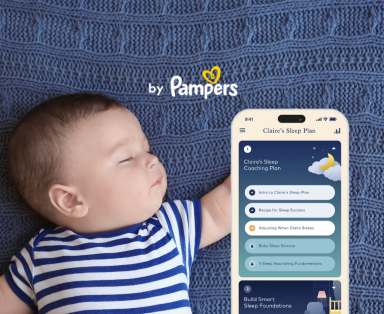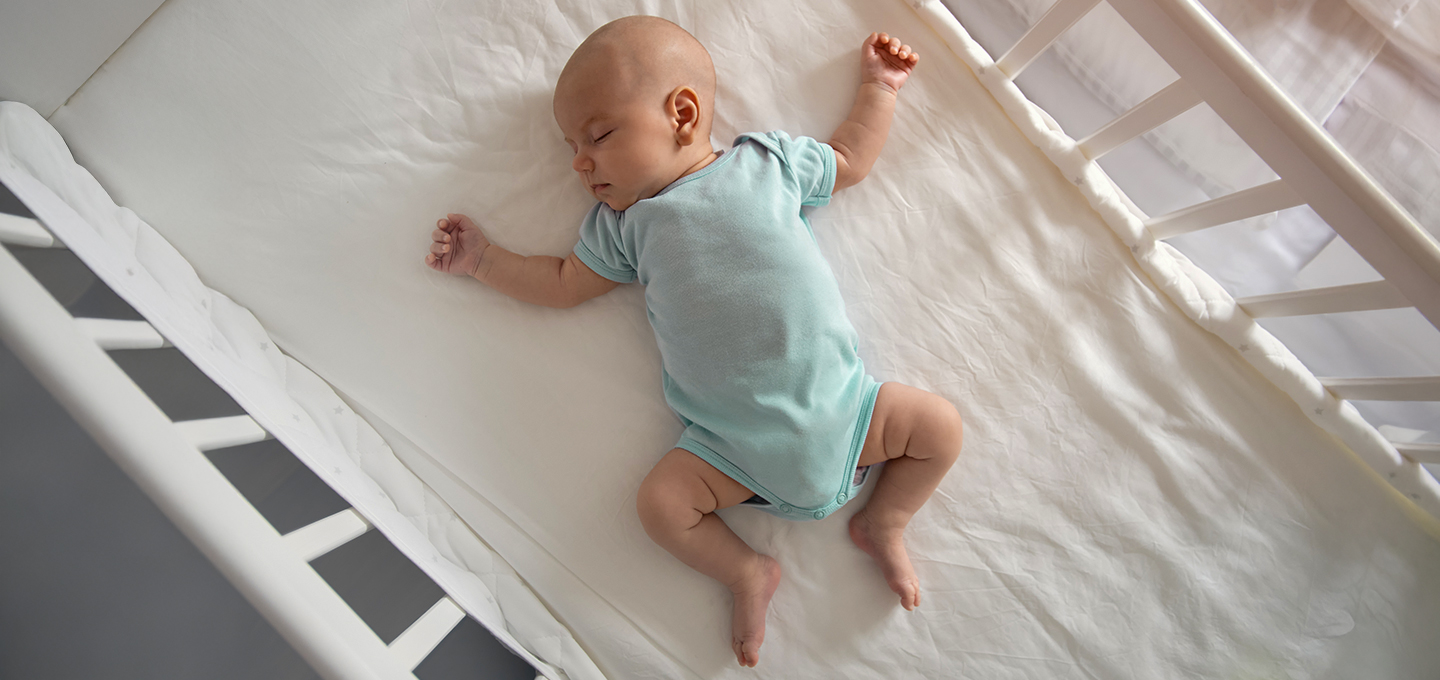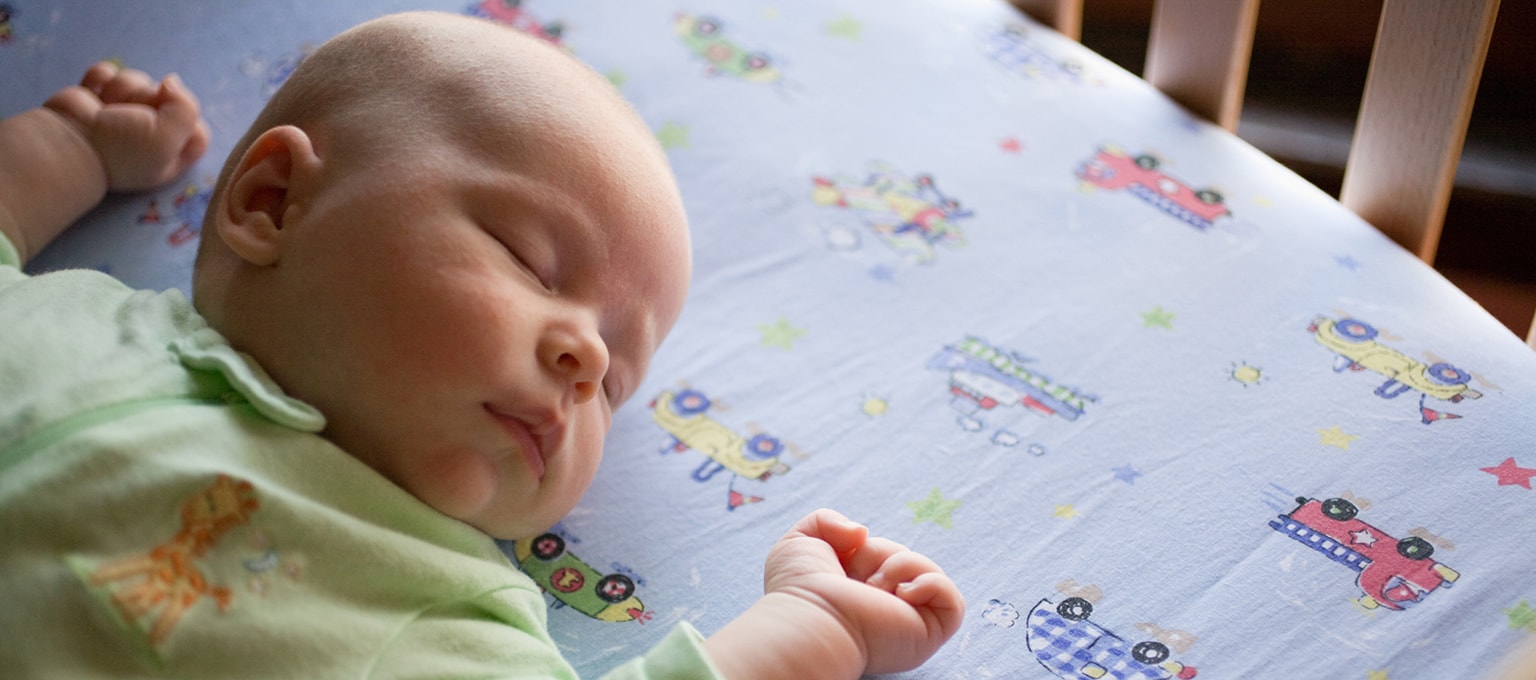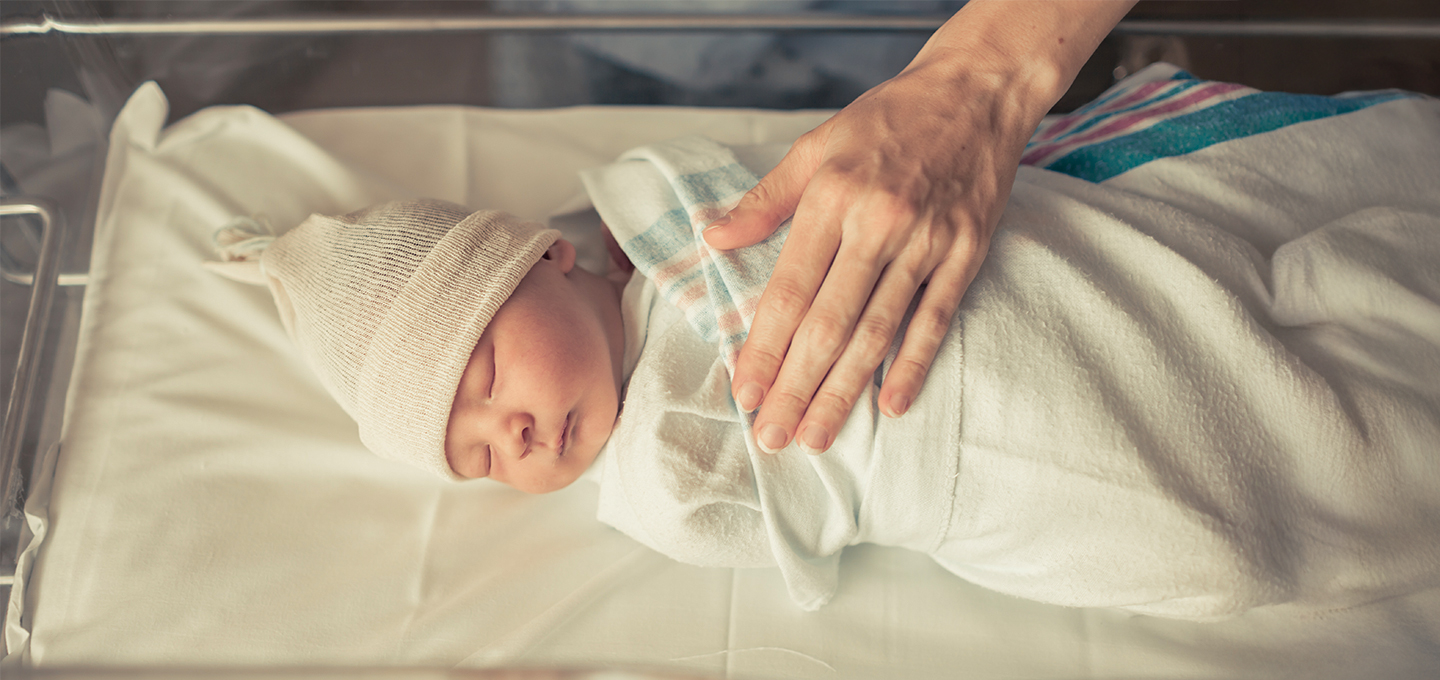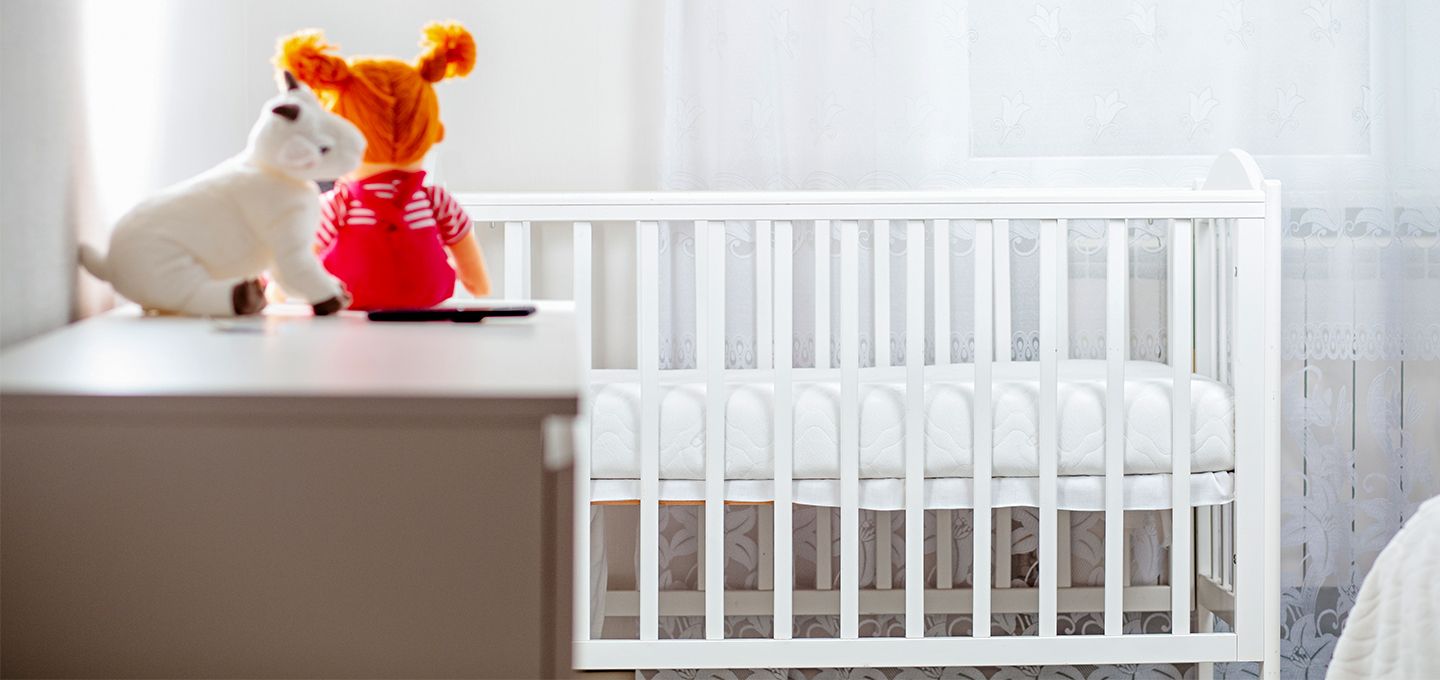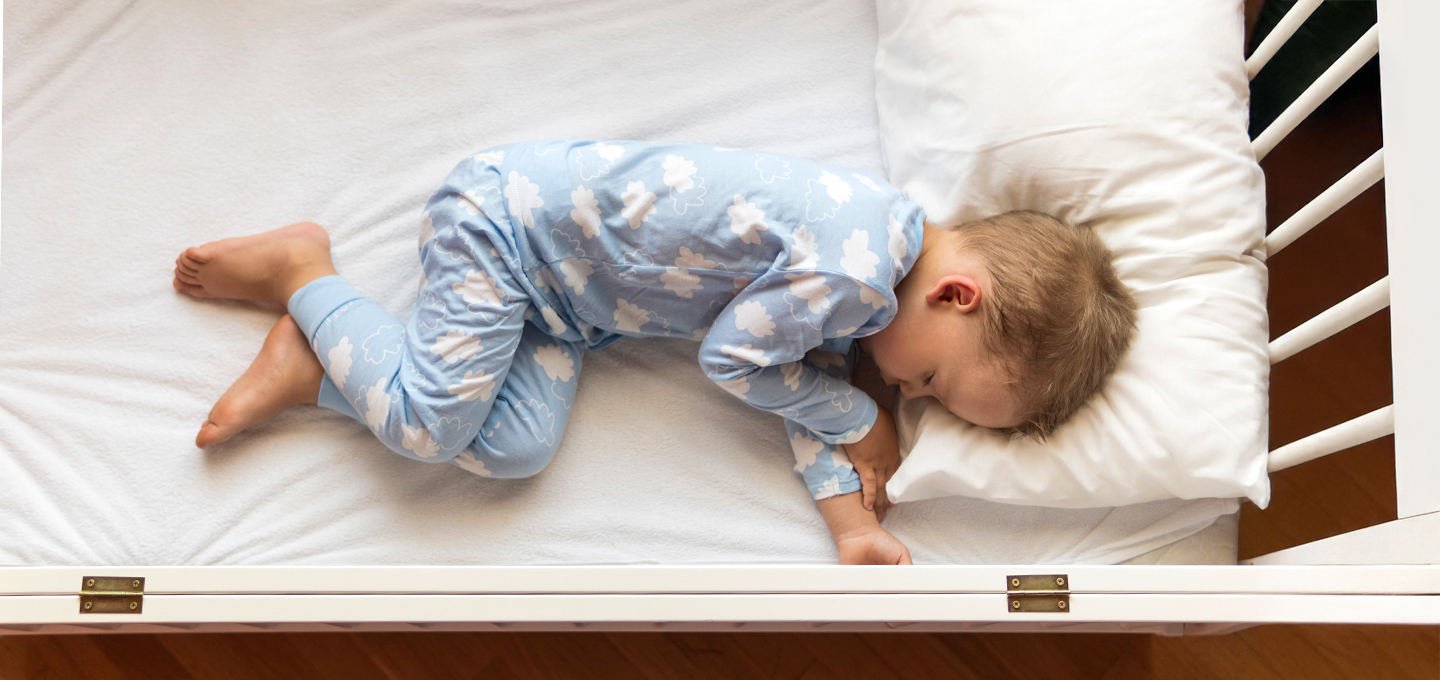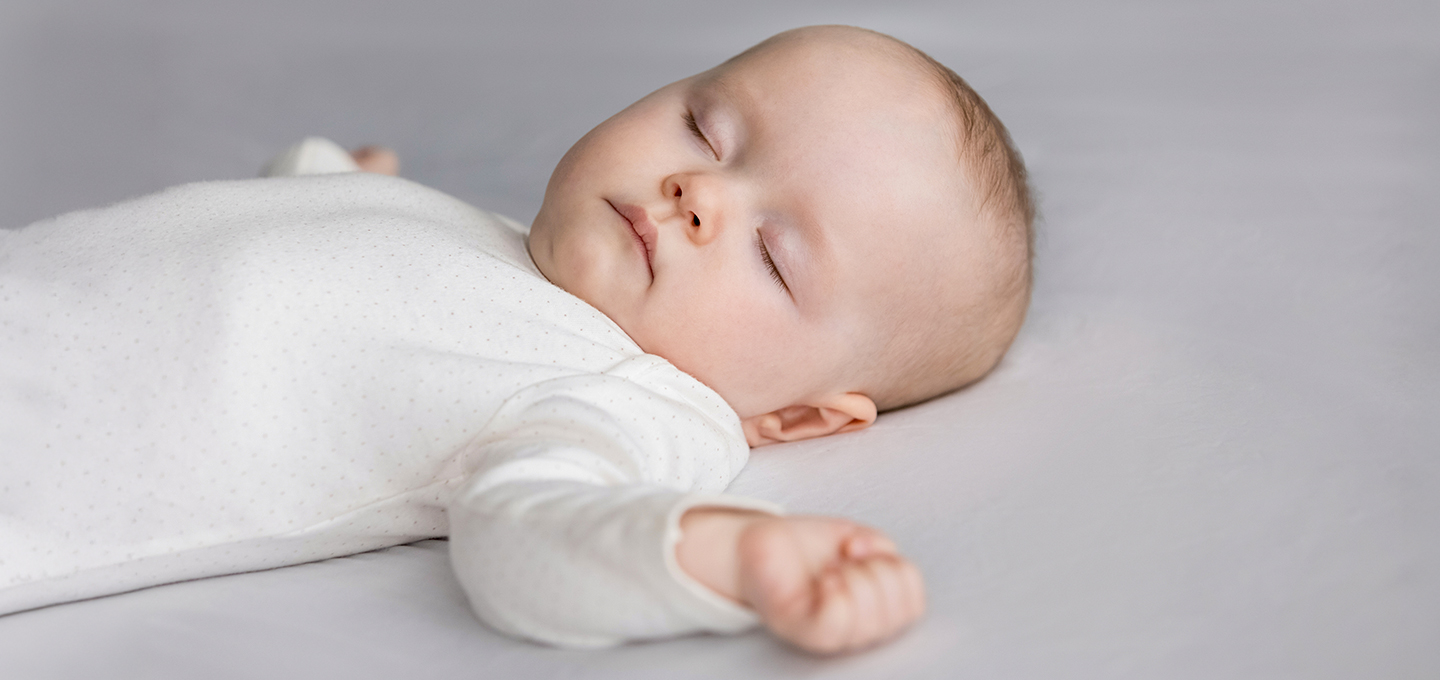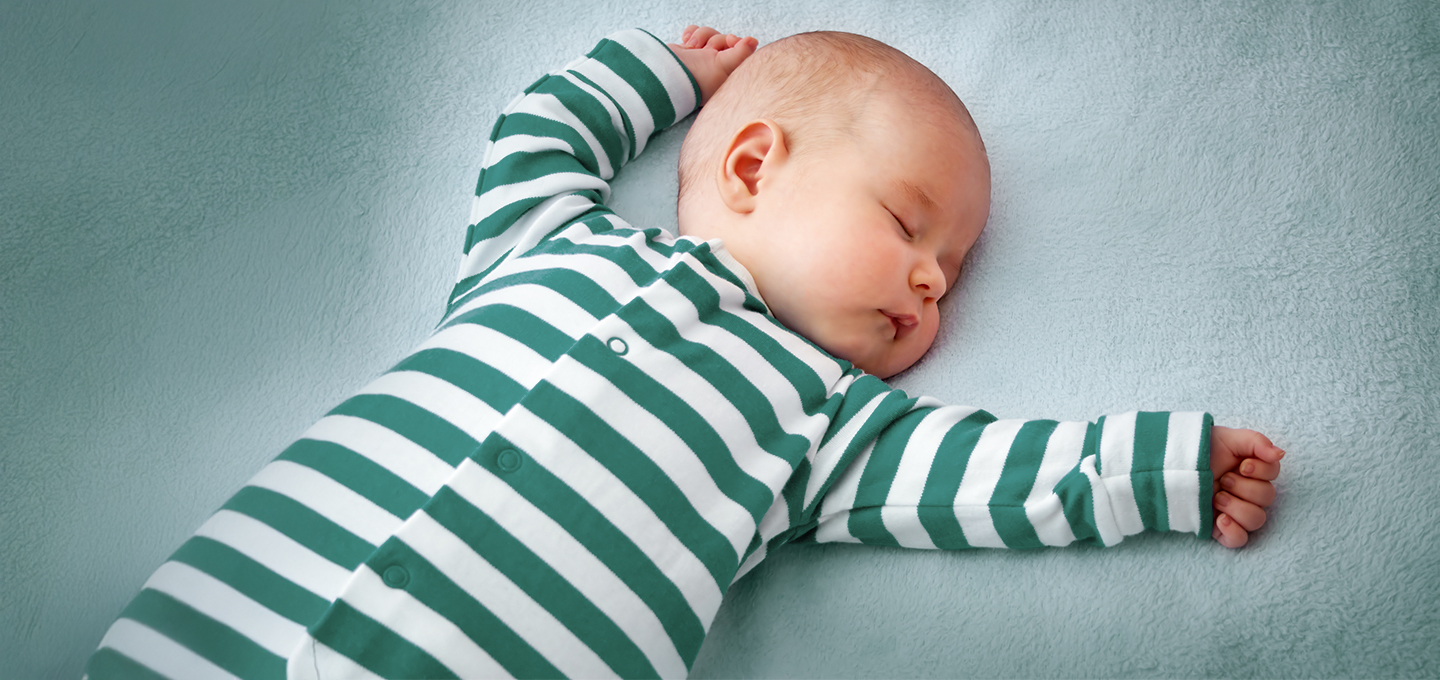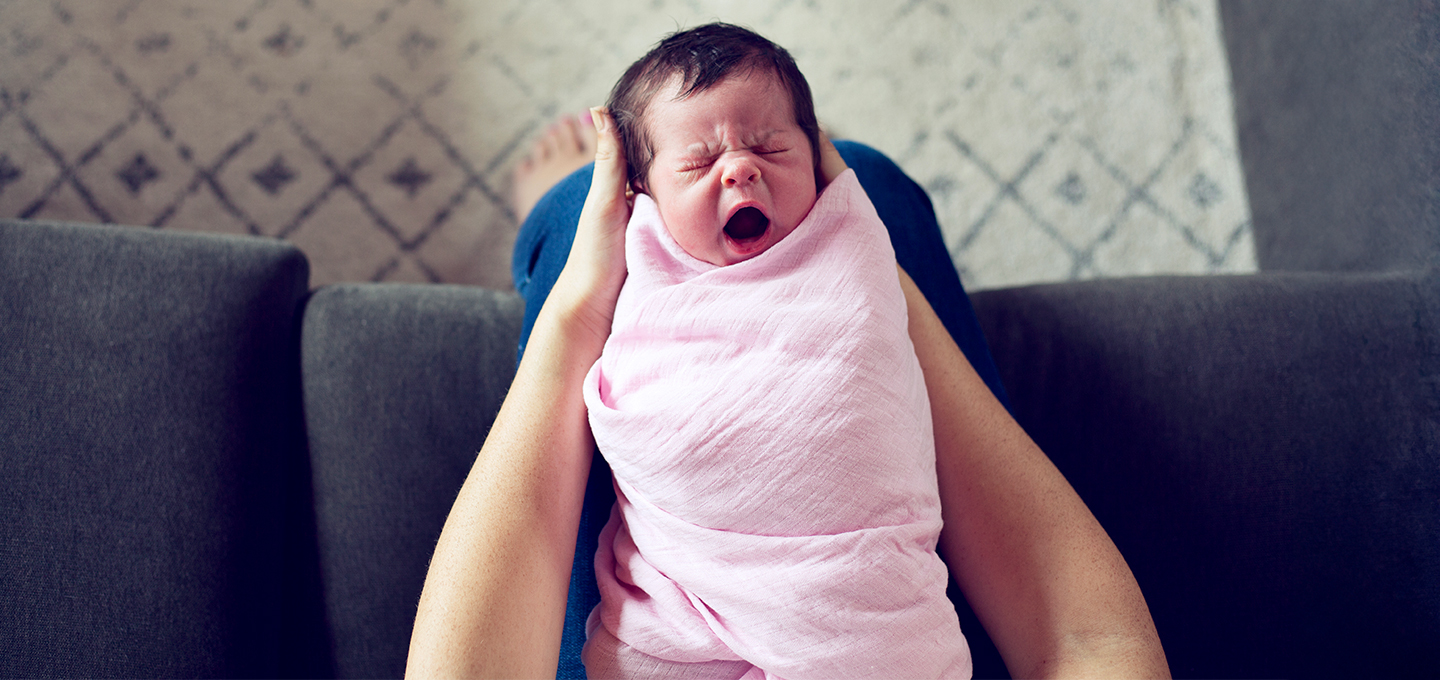
When to Stop Swaddling Your Baby: Signs to Look Out For
3 min readUpdated November 16, 2025

MD, FAAP
3 min readUpdated November 16, 2025

MD, FAAP
IN THIS ARTICLE
Swaddling can be a helpful sleep tool in the newborn stage, but it’s not meant to last forever. Knowing when and how to stop swaddling is important for your baby’s safety and comfort.
Here’s a quick look at the signs to stop swaddling:
Not sure what to do next? You might try transitioning out of the swaddle gradually with a transitional swaddle or sleep sack.
In this guide, we’ll walk you through exactly how to transition your baby from swaddling to a sleep sack, when it’s time to stop swaddling, and tips for helping your baby sleep without the swaddle.
Why Stop Swaddling?
Swaddling can help soothe newborns in the early days, but it isn’t meant to be a long-term sleep solution. The main reason to stop swaddling is safety, particularly when your baby starts showing signs to stop swaddling, such as rolling over. Once a baby rolls from back to front, being swaddled could increase the risk of suffocation or other sleep-related injuries.
According to the AAP’s safe sleep guidelines, all babies should be placed to sleep on their backs on a firm, flat surface without loose bedding. While swaddling may help your baby sleep more soundly at first, it’s essential to understand when it becomes unsafe—and how to transition out of the swaddle at the right time.
Swaddling also carries other risks if used too long or incorrectly:
If your baby keeps breaking out of a swaddle or you notice other signs (such as rolling or increased fussiness), it may be time to move on. Learning how to swaddle safely in the early weeks can help, but it’s just as important to know when to stop.
And if you’re wondering why some babies seem to jolt themselves awake, it's due to something called the startle or Moro reflex. This is totally normal in the early months and fades with time. Learn more about newborn reflexes here.
Signs to Stop Swaddling
There are a few key signs to look out for that can help you know when it’s time to stop swaddling. These include:
Other signs of overheating include:
If you’re noticing any of these signs, it may be time to begin transitioning out of the swaddle. Don’t worry, there are gentle ways to do it, and we’ll guide you through them in the next sections.
At What Age to Stop Swaddling?
There’s no exact age to stop swaddling your baby; however, once they start attempting to roll over, you should stop swaddling them. Rolling over commonly occurs when babies are around 3 or 4 months old, but some babies may start working on this move at about 2 months old.
Swaddling your baby once they can roll over may increase the risk of SIDS (sudden infant death syndrome) and suffocation.
How to Transition out of the Swaddle?
There’s no single method for transitioning out of swaddling, but there are a few gentle approaches that may help your baby adjust to sleeping without it. Some babies may adapt quickly, while others might need a bit more time. That’s where a transitional swaddle or a sleep sack can come in handy.
After you stop swaddling, dress your baby for sleep in a breathable sleeper, pajama set, or sleep sack—layered over a diaper and undershirt if needed—a good rule of thumb: one more layer than you’re wearing.
It’s also a good idea to keep the bedroom at a cool temperature for your baby’s optimal comfort.
Swaddle with Arms Out
Some babies enjoy the snugness of being wrapped, even as they grow. One step in transitioning out of swaddling is to allow one or both arms to be exposed while keeping the rest of the body lightly wrapped. You can also try a sleep sack with armholes, which gives your baby the comfort of gentle containment without restricting movement. This may work best around 2 months, or when your baby is starting to roll.
Use a Transitional Item
If your little one is having trouble sleeping or seems restless at night, a transitional swaddle or sleep sack might help. These wearable blankets are designed to keep your baby warm and secure without wrapping their arms in. Look for a style that allows free movement, especially once your baby can roll. This is often the most natural transition from swaddle to sleep sack.
With patience and consistency, your baby can become accustomed to sleeping without a swaddle. Every baby is different, so feel free to try a few approaches to see what works best for you both.
How to Transition Your Baby From a Swaddle to a Sleep Sack?
Wondering how to transition your baby from a swaddle to a sleep sack? It’s often a smooth next step after you stop swaddling, especially when your baby still enjoys the cozy feel of being wrapped but needs more freedom to move.
Instead of swaddling, you can try a wearable blanket or sleep sack that keeps your baby warm without wrapping their arms. This is a safe option once your baby begins showing signs of rolling, provided the product does not restrict their arms, chest, or overall movement.
To support the transition, it may help to add some soothing elements to your bedtime routine, such as:
No matter what your baby wears to sleep, always place them on their back in a crib or bassinet with a firm mattress and no loose bedding. This is the safest sleeping position for all babies, swaddled or not.
If you’re looking for more support, the Smart Sleep Coach offers personalized guidance to help you build healthy sleep habits based on your baby’s unique needs. Take the short quiz below to generate a personalized sleep plan for your baby.
FAQS AT A GLANCE
You should stop swaddling your baby when they start showing signs of rolling over, which typically happens around 2–4 months of age. This helps reduce the risk of suffocation or other safety concerns.
The Bottom Line
Swaddling can help your newborn feel calm and sleep better, but it’s important to stop once your baby starts trying to roll or shows signs of overheating.
You don’t have to swaddle—some babies sleep well without it. If you’re unsure, your baby’s healthcare provider can help you decide what’s best and how to do it safely.
As your baby grows, try using a transitional swaddle or sleep sack, along with soothing routines to support good sleep.
And don’t forget to check the Pampers Rewards App for helpful savings on daily Pampers essentials you use every day.
- American Academy of Pediatrics. Caring for Your Baby and Young Child: Birth to Age 5, 7th ed. (New York: Bantam Books, 2019).
- Cleveland Clinic: Are Sleep Sacks Safe for Babies?
- HealthyChildren.org. "A Parent's Guide to Safe Sleep."
- Healthy Children: Good Night, Sleep Tight
- HealthyChildren.org. "Preventing SIDS."
- Healthy Children: Swaddling: Is it Safe?
- HealthyChildren.org. "Symptom Checker: Crying Baby – Before 3 Months Old."
- KidsHealth. "A Guide for First-Time Parents."
- Kids Health: A Guide for First-Time Parents


